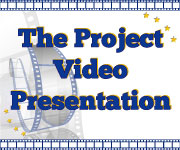basic information
THE INITIATIVE PROMOTER’S PERSPECTIVE
The information for the Case Study was collected during an interview with Giuseppe Nuccetelli, former coordinator of the “DEAL” project at the “Istituto Statale per Sordi” of Rome, Italy.
The background of the “DEAL” project is represented by the necessity of deaf people to acquire a specific linguistic know-how both in Italian and in foreign languages. Deaf people have to face to multiple barriers approaching a new language: the project aims to overcome the natural sensorial deficit deaf people have by the use of well known tools (language of signs) and innovative ones (visual materials).
The project target group is composed by deaf students of high schools.
The project target languages are: German, Italian, Spanish, English, Italian language of signs, Catalan language of signs, Austrian language of signs, British language of signs.
The “DEAL” project has the macro objective to develop linguistic materials addressed to deaf people. This objective is reached through a research finalised to the use of different tools which can overcome the linguistic barriers deaf people have to deal with.
The “DEAL” project is the result of a complex research activity based on existing materials and previous experiences. Thanks to those researches, the main idea of the project (sharing of various sensorial tools) has been finalised and discussed with the partners.
The project implemented an innovative e-learning approach and an educational model specifically adapted to the needs of deaf people. Tools and resources are based on methodological strategies and educational techniques that allow bettering using the main channel of the deaf that is the visual one. The project also developed a greater awareness about the natural difficulties deaf people have in learning their national language and a foreign language. The same awareness was acquired about how innovative tools may be useful to overcome those difficulties.
The “Istituto Statale per Sordi”, the “DEAL” project promoter, decided to submit the application for the European Language Label because it believed that the innovative potential constituted by the project deserved an official recognition. In addition, according to the “Istituto Statale per Sordi” the European Label Language could represent the first step to guarantee the sustainability of the project.
Following the awarding of the European language Label, there was the motivation to continue the work carried out with the submission of a new project in the same field. Therefore, the Leonardo da Vinci Transfer of Innovation DEAL TOI project was presented and approved.
The European Language Label logo made its first appearance within the scientific world, because the “Istituto Statale per Sordi” used it in all the publications explaining the linguistic and scientific contribution offered by the project.
Receiving the European Language Label had a motivational effect on the project, pushing towards its second edition, the “DEAL TOI”. The new project has two main objectives. The first is to transfer the educational model that has been tested by the first DEAL project to the United Kingdom, thereby creating a course in written English for business. The second objective is to test the DEAL courses thoroughly, so that they can become permanent elements of education for deaf learners in the partner countries.
In order to develop a quality project in the field of Language learning, Giuseppe Nuccetelli advices to start from an innovative idea, focusing on the concrete benefits it can offer to its target groups.
Giuseppe Nuccetelli advices that, in order to better exploit the European Language Label that language projects may receive, it is important, first of all, to clearly explain what the European language Label is and the quality issues related to its awarding.
THE NELLIP NETWORK’S PERSPECTIVE
The NELLIP Network selected the “DEAL” project for its consistency with the political priorities of the European Commission in the field of language learning. In particular, the “DEAL” project promotes the language learning for a specific purpose, helping deaf people to overcome the linguistic barriers they have to face to their approach to a foreign language. The promotion of the visual channel to language teaching and learning has been used by the “Istituto Statale per Sordi” as the best tool to reach the attended results.
THE NATIONAL AGENCY’S PERSPECTIVE
According to ISFOL, the DEAL project is to be selected both as a Case Study and as an Italian Best Practice.
First of all, because it is addressed to a specific and interesting target group (deaf people) which would otherwise be excluded from the language learning process. The project is completely built around the specific needs of deaf people through the use of traditional tools (language of signs) and innovative ones (visual materials) provided through ICT.
Secondly, the project developed an important partnership with the “National Research Council” which provided the scientific base of the project. The partnership was extended to other national Public Administrations which guaranteed the sustainability and the visibility of the project.
The DEAL project was further developed in the DEAL TOI project in the framework of which a new language has been introduced, i.e. English. The DEAL TOI project has also been awarded the 2012 European Language Label: an additional confirmation of the quality work carried out by the transnational partnership.
Comments on this Case Studies
